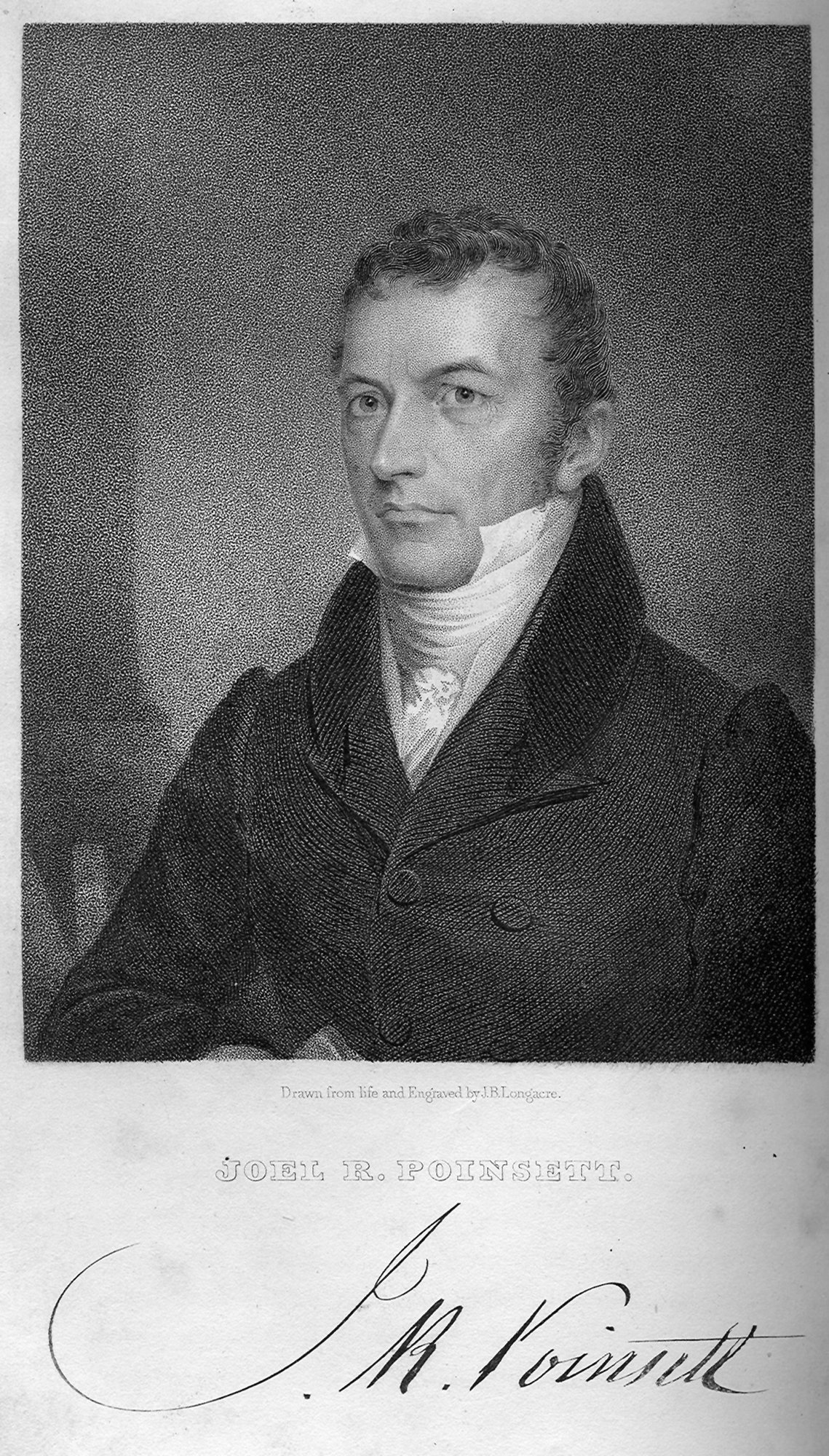This month in S.C. history: March 1825, Joel Poinsett was appointed Minister to Mexico
Joel Roberts Poinsett was born in Charleston in 1779 and schooled in England. In 1797, he began medical school in Edinburgh, Scotland, but returned to Charleston after the first year. In Charleston, he studied law for a short time and then set off to travel through Europe. He was fluent in several languages and kept company with such dignitaries as Napoleon I and Czar Alexander I. When tension mounted between Britain and the U.S. in 1808, Poinsett returned to the states. He was then appointed trade envoy to South America, where he attempted to stir up resistance to Spain. In 1814, Spanish Royalists forced him to flee Chile, and he returned home.
Poinsett was elected to South Carolina's General Assembly in 1816 and was made president of the state Board of Public Works in 1819. In 1821, he was elected to Congress as a representative from Charleston. His voting record indicates that he supported enlarging the military, opposition to tariff increases and recognition of South American republics. In 1825, President James Monroe appointed Poinsett the first U.S. ambassador to Mexico. In that role, he attempted to purchase Texas for the United States and worked to obtain a commercial treaty along the southwestern border. Poinsett was unpopular with Mexico's monarchists and British traders. In late 1829, the Mexican government asked that he be recalled. Poinsett returned to South Carolina in early 1830.
As a strong unionist, Poinsett opposed the state's nullifiers and acted as President Andrew Jackson's local agent. This brought him in direct conflict with John C. Calhoun and lessened his political influence within the state. But Poinsett was a nationally known figure and in 1837, President Van Buren appointed him Secretary of War. In that role, Poinsett worked to raise the professional standards of the U.S. Army. He sent officers to train in Europe and worked to improve the artillery. As a proponent of western expansion, he also oversaw the removal of 40,000 Indians. He served as Secretary of War until 1841.
Poinsett returned to South Carolina and split his time between a farm in the Greenville District and his wife's plantation near Georgetown. He spoke out in favor of education, economic improvements and the need to end the South's dependence on slavery. In 1844, Poinsett became president of the National Institute, a forerunner of the Smithsonian Institution. A lifelong learner, his interests included botany, agriculture and animal husbandry. He introduced a red-leaf plant from Mexico to North America and it was named "poinsettia" in his honor. Poinsett died en route to his farm in Greenville on Dec. 12, 1851. He is buried in the cemetery of the Church of the Holy Cross in Stateburg.
More Articles to Read

